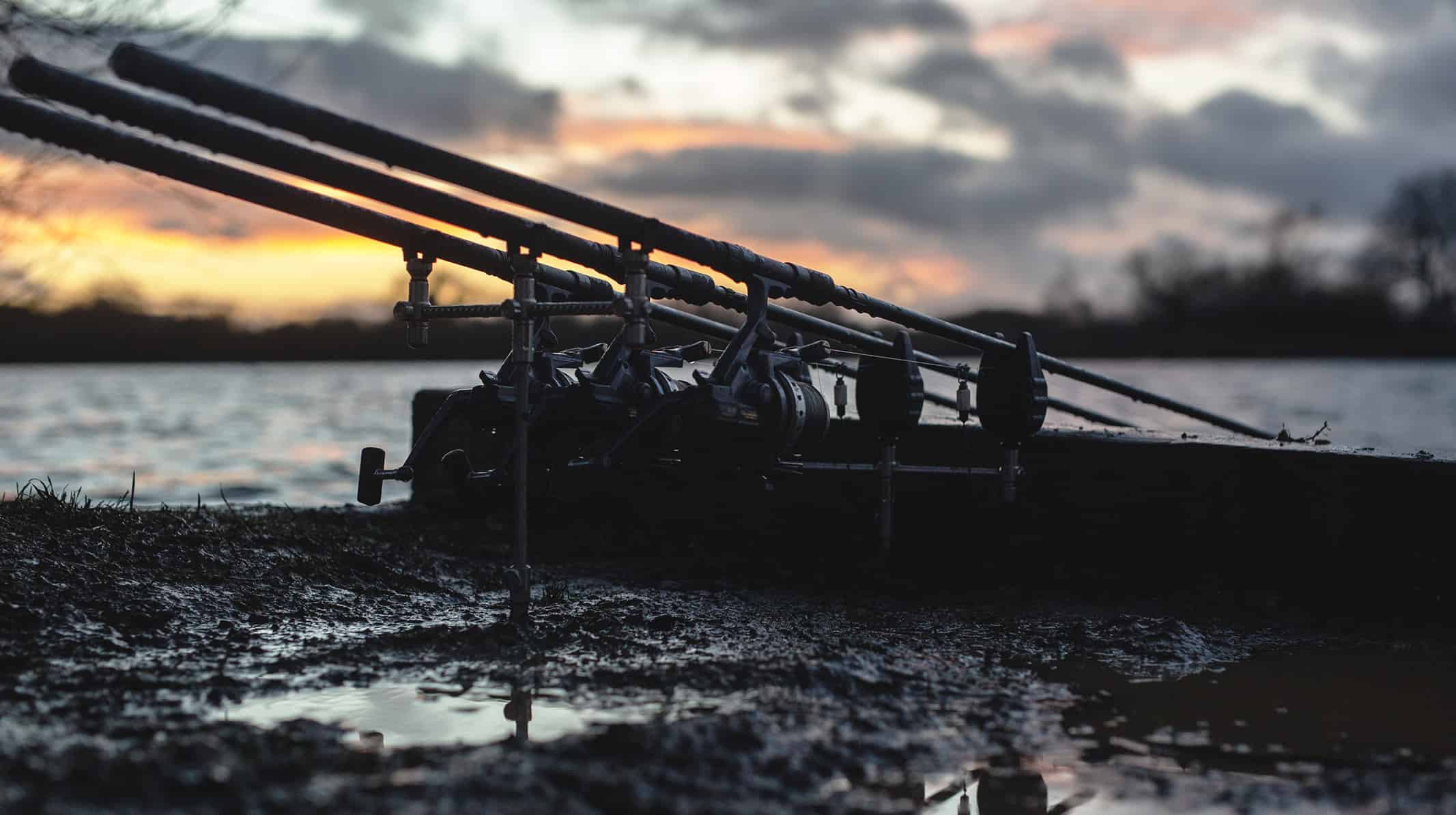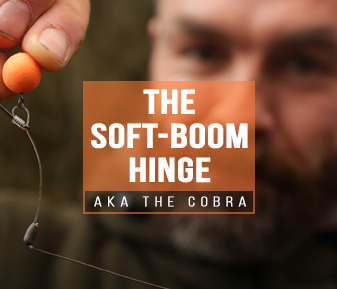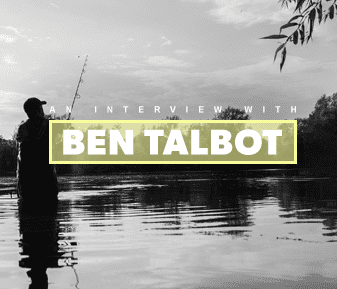Gaz Fareham explains why the Soft Boom Hinge aka 'The Cobra' is his go to rig - sharing his vast knowledge on the most effective set up to catch bites.
As an astute lifelong carp angler making the most of cold water opportunities is top priority to German Team member Uli Zeller, who has developed a mindful strategy for cold water success, that he shares with us here.
As an astute lifelong carp angler making the most of cold water opportunities is top priority to German Team member Uli Zeller, who has developed a mindful strategy for cold water success, that he shares with us here.
I think that it would be true to say that during my early carp fishing years I found it difficult to develop a passion for winter fishing. It is cold outside; the nights are eternally long, and captures are indisputably more difficult to come by. Somehow, over the years, I found my way into it, and today I absolutely love it! In fact, I couldn't imagine hanging up my carp fishing rods over the wintertime anymore.
So, what made me change my mind?
That's both really easy and quick for me to explain. You see, I found that following a few simple and logical rules made my winter fishing was much more productive and hence, much more enjoyable and rewarding. This does not mean that following these ‘rules’ will guarantee that you will catch carp in the colder months, no, but in my book these guidelines make it more likely to happen when the going gets tough and the water temperatures bottom out.
This feature simply describes my personal terms of reference that I tend to follow when I go winter fishing for carp:
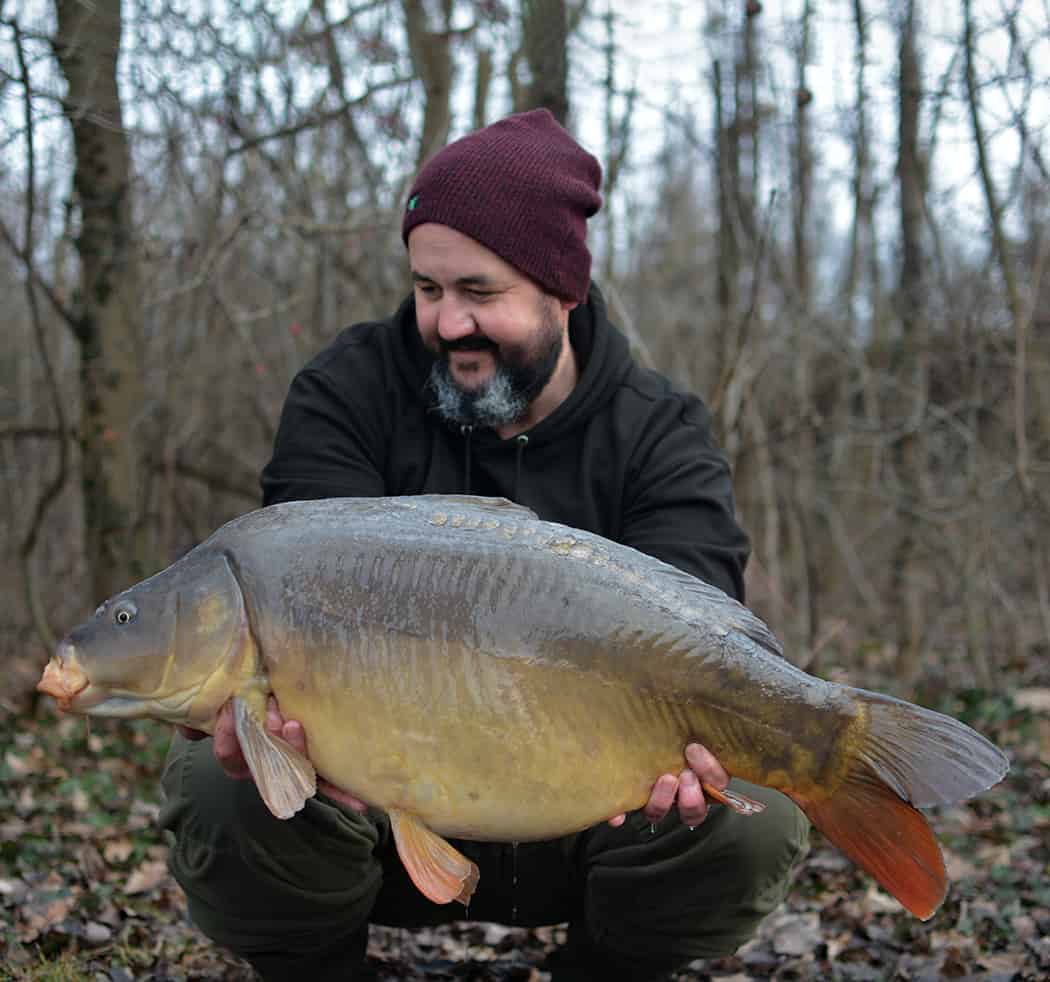
I think that it would be true to say that during my early carp fishing years I found it difficult to develop a passion for winter fishing. It is cold outside; the nights are eternally long, and captures are indisputably more difficult to come by. Somehow, over the years, I found my way into it, and today I absolutely love it! In fact, I couldn't imagine hanging up my carp fishing rods over the wintertime anymore.
So, what made me change my mind?
That's both really easy and quick for me to explain. You see, I found that following a few simple and logical rules made my winter fishing was much more productive and hence, much more enjoyable and rewarding. This does not mean that following these ‘rules’ will guarantee that you will catch carp in the colder months, no, but in my book these guidelines make it more likely to happen when the going gets tough and the water temperatures bottom out.
This feature simply describes my personal terms of reference that I tend to follow when I go winter fishing for carp:

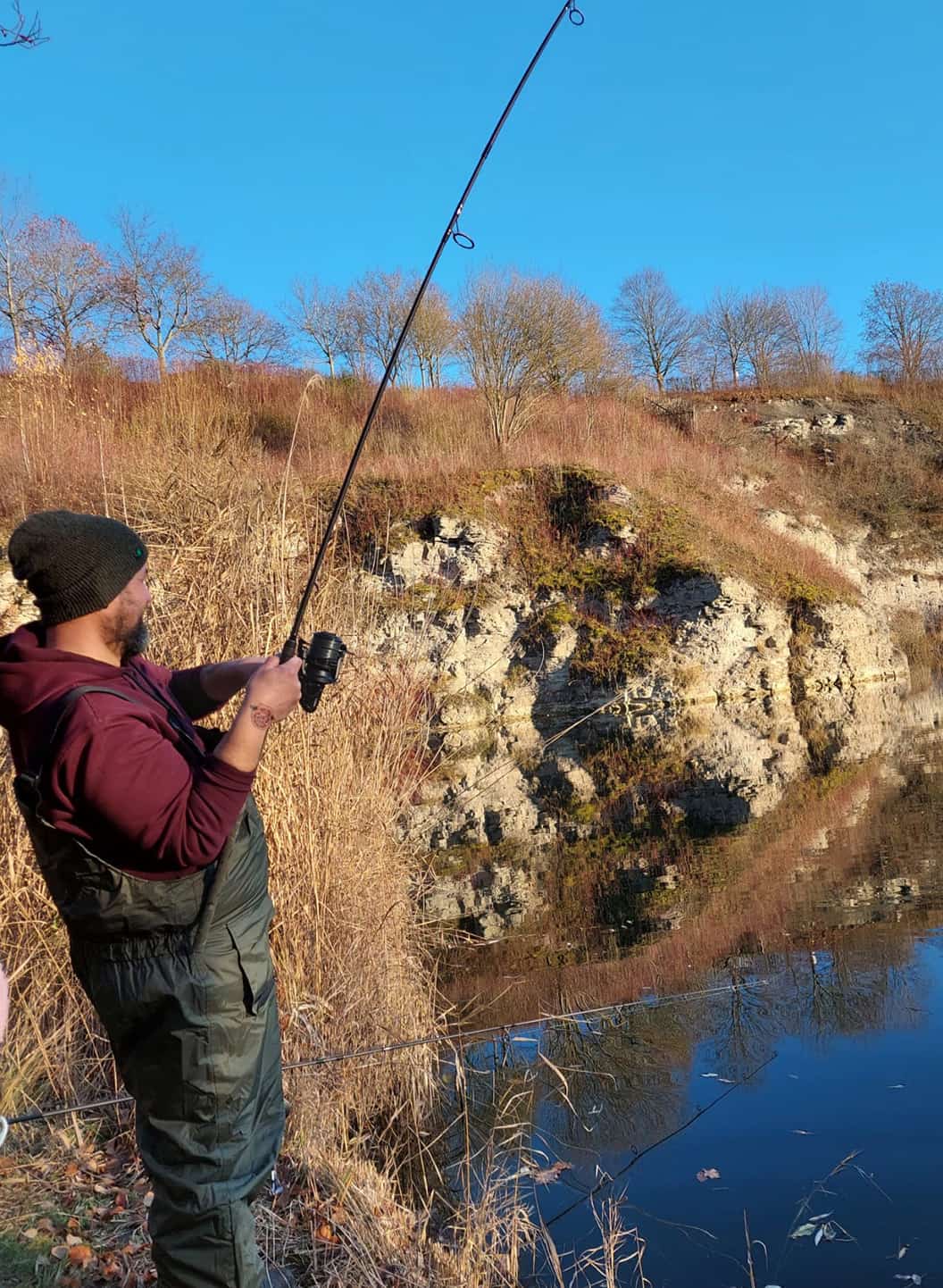
TIP 1
CHOICE OF VENUE...
You often read in articles that for winter fishing you need a venue with “good winter form”, but what does “good winter form” really mean? For me a water ideally should meet as many as possible of the following criteria to be a good winter venue:
In winter, I always look for those waters which hold a good stock of carp, although this can sometimes mean compromising on the ultimate size of the fish a little bit. However, in winter the fish’s weight is less relevant to me in comparison to the warmer months, and I don't necessarily need to catch monsters, as catching any carp at all already feels like an achievement.
I look for smaller, and ideally waters that remain clear during the winter, where the carp generally are naturally going to be easier to find by walking around and looking. This is because, as I will describe later, finding fish in winter can mean that a consistent success, or maybe a big hit is possible.
Beyond that, I also look for waters which are not too uniform in depth, so venues with a lot of structures and areas of different depths. This is because in winter the water temperature plays a massive role regarding where the fish feel most comfortable and where they want to settle or feed.
Lakes which are fed by underwater springs or groundwater are always worth a look as well, because the groundwater will always be a bit warmer when compared to water coming in from a feeder stream for example.
TIP 1
CHOICE OF VENUE...
You often read in articles that for winter fishing you need a venue with “good winter form”, but what does “good winter form” really mean? For me a water ideally should meet as many as possible of the following criteria to be a good winter venue:
In winter, I always look for those waters which hold a good stock of carp, although this can sometimes mean compromising on the ultimate size of the fish a little bit. However, in winter the fish’s weight is less relevant to me in comparison to the warmer months, and I don't necessarily need to catch monsters, as catching any carp at all already feels like an achievement.
I look for smaller, and ideally waters that remain clear during the winter, where the carp generally are naturally going to be easier to find by walking around and looking. This is because, as I will describe later, finding fish in winter can mean that a consistent success, or maybe a big hit is possible.
Beyond that, I also look for waters which are not too uniform in depth, so venues with a lot of structures and areas of different depths. This is because in winter the water temperature plays a massive role regarding where the fish feel most comfortable and where they want to settle or feed.
Lakes which are fed by underwater springs or groundwater are always worth a look as well, because the groundwater will always be a bit warmer when compared to water coming in from a feeder stream for example.

TIP 2
LOCATION...
After you have chosen your winter venue, location really is the most important thing to focus on. If location is important in summer, it means everything in winter. It is indisputably the most important factor, dictating success or failure.
The reason for this is simply that in winter, carp generally tend to group up and stay in one place, often in bigger groups and for longer periods. So, if you find signs of showing fish this will often mean that you found a big group of fish hanging out together.
Where the fish group up, and whether they prefer deeper or shallower water is very difficult to say on an abstract level. This can be different from venue to venue and depends heavily upon the weather conditions on the day that you are fishing.
Generally, I would say that in early winter, when the water temperature is dropping, the fish prefer deeper water because a bigger volume body of water takes longer to cool down. Conversely, at the end of the winter, moving into spring, the shallows can be a good bet, because they will warm up much quicker. However, this is only a very rough rule of thumb, and obviously patterns can be different from water to water and even from day to day.
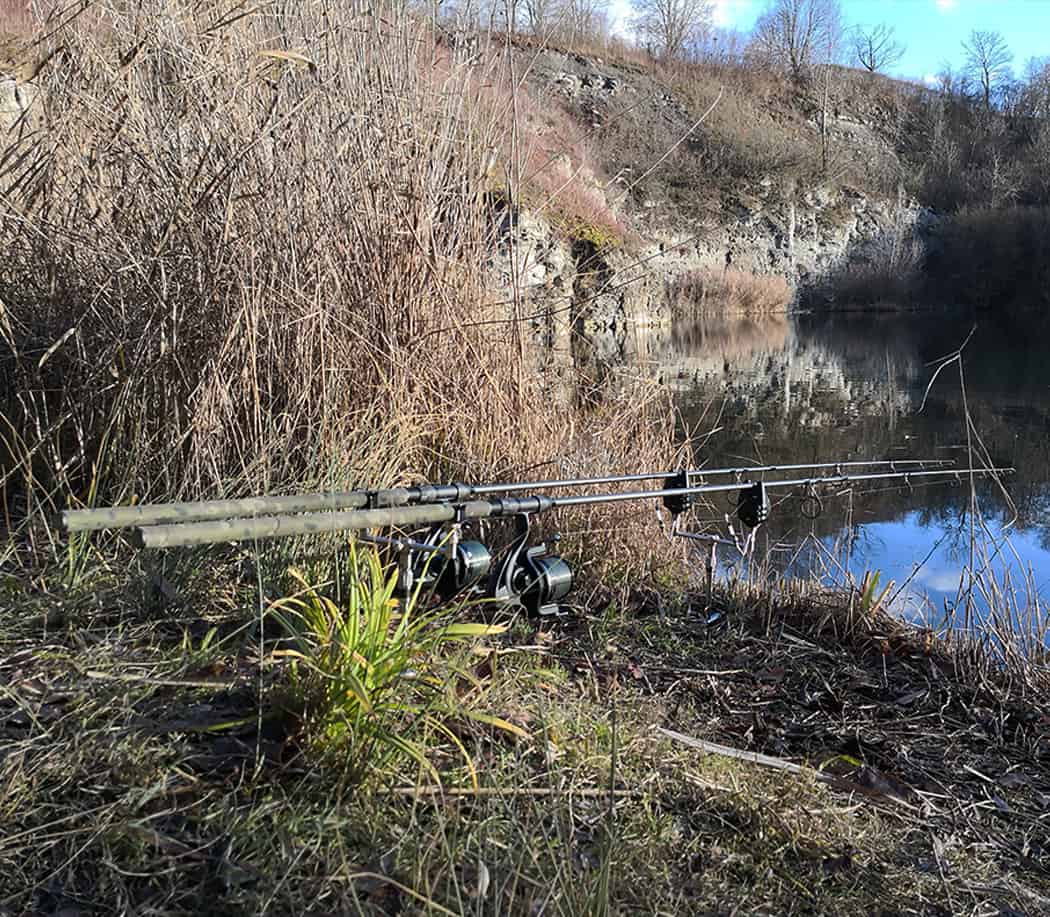
Finally, I would always recommend staying mobile so that you can move very quickly should you locate fish in other areas of the lake. Personally, I like fishing off my barrow, only setting up the minimum kit that’s needed to get a bite and handle the fish properly.
While in the warmer months’ fishing for liners can be helpful to find the fish, this does not play a significant role in my winter fishing. The reason is simply that the fish do not move around as much in winter. As I generally have a lot less liners in winter when compared to the rest of the year, in my view liners are too few and far between to be a cornerstone of my efforts to find the fish.
What I have found to be more helpful, in terms of locating fish, is to use my Deeper Chirp+ which I use to check likely looking areas. Normally, I don’t really rely on the fish symbols on any type of sonar or fish finder, but in winter this can give you a real edge, because the fish tend to be grouped up. So, if your sonar indicates a lot of fish symbols in a tight area there is a good chance that you have found a holding area for the carp which will be worth noting and exploring the area later or fishing for the group as soon as possible.
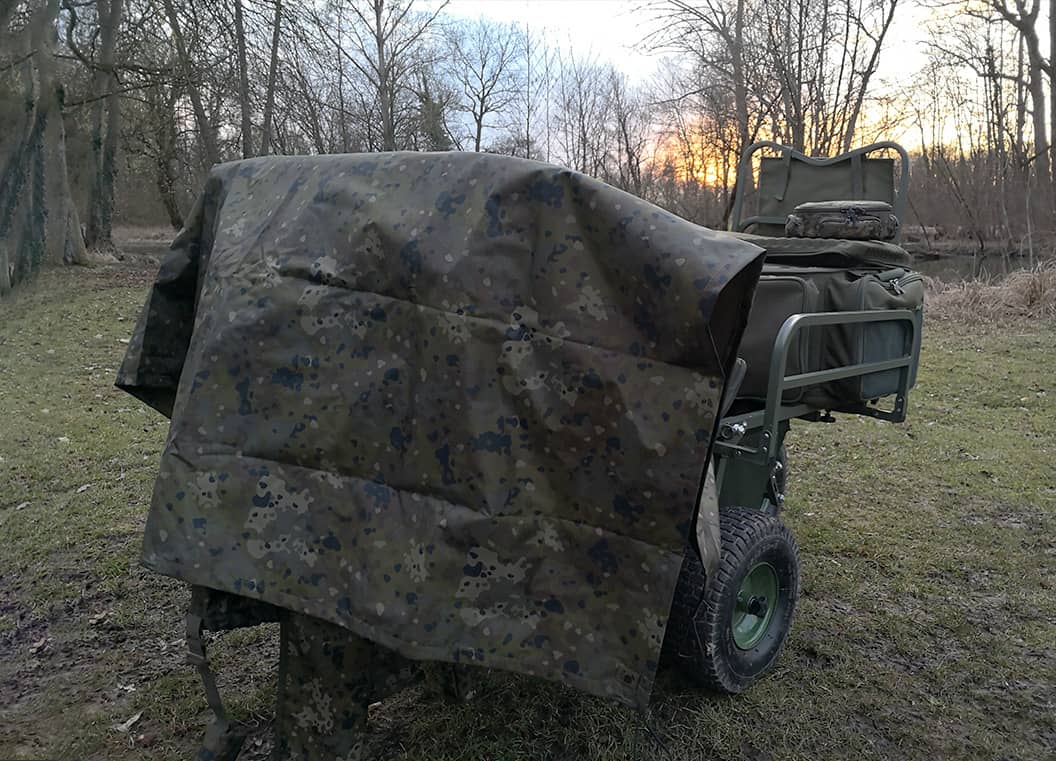
TIP 2
LOCATION...
After you have chosen your winter venue, location really is the most important thing to focus on. If location is important in summer, it means everything in winter. It is indisputably the most important factor, dictating success or failure.
The reason for this is simply that in winter, carp generally tend to group up and stay in one place, often in bigger groups and for longer periods. So, if you find signs of showing fish this will often mean that you found a big group of fish hanging out together.
Where the fish group up, and whether they prefer deeper or shallower water is very difficult to say on an abstract level. This can be different from venue to venue and depends heavily upon the weather conditions on the day that you are fishing.
Generally, I would say that in early winter, when the water temperature is dropping, the fish prefer deeper water because a bigger volume body of water takes longer to cool down. Conversely, at the end of the winter, moving into spring, the shallows can be a good bet, because they will warm up much quicker. However, this is only a very rough rule of thumb, and obviously patterns can be different from water to water and even from day to day.


Finally, I would always recommend staying mobile so that you can move very quickly should you locate fish in other areas of the lake. Personally, I like fishing off my barrow, only setting up the minimum kit that’s needed to get a bite and handle the fish properly.
While in the warmer months’ fishing for liners can be helpful to find the fish, this does not play a significant role in my winter fishing. The reason is simply that the fish do not move around as much in winter. As I generally have a lot less liners in winter when compared to the rest of the year, in my view liners are too few and far between to be a cornerstone of my efforts to find the fish.
What I have found to be more helpful, in terms of locating fish, is to use my Deeper Chirp+ which I use to check likely looking areas. Normally, I don’t really rely on the fish symbols on any type of sonar or fish finder, but in winter this can give you a real edge, because the fish tend to be grouped up. So, if your sonar indicates a lot of fish symbols in a tight area there is a good chance that you have found a holding area for the carp which will be worth noting and exploring the area later or fishing for the group as soon as possible.
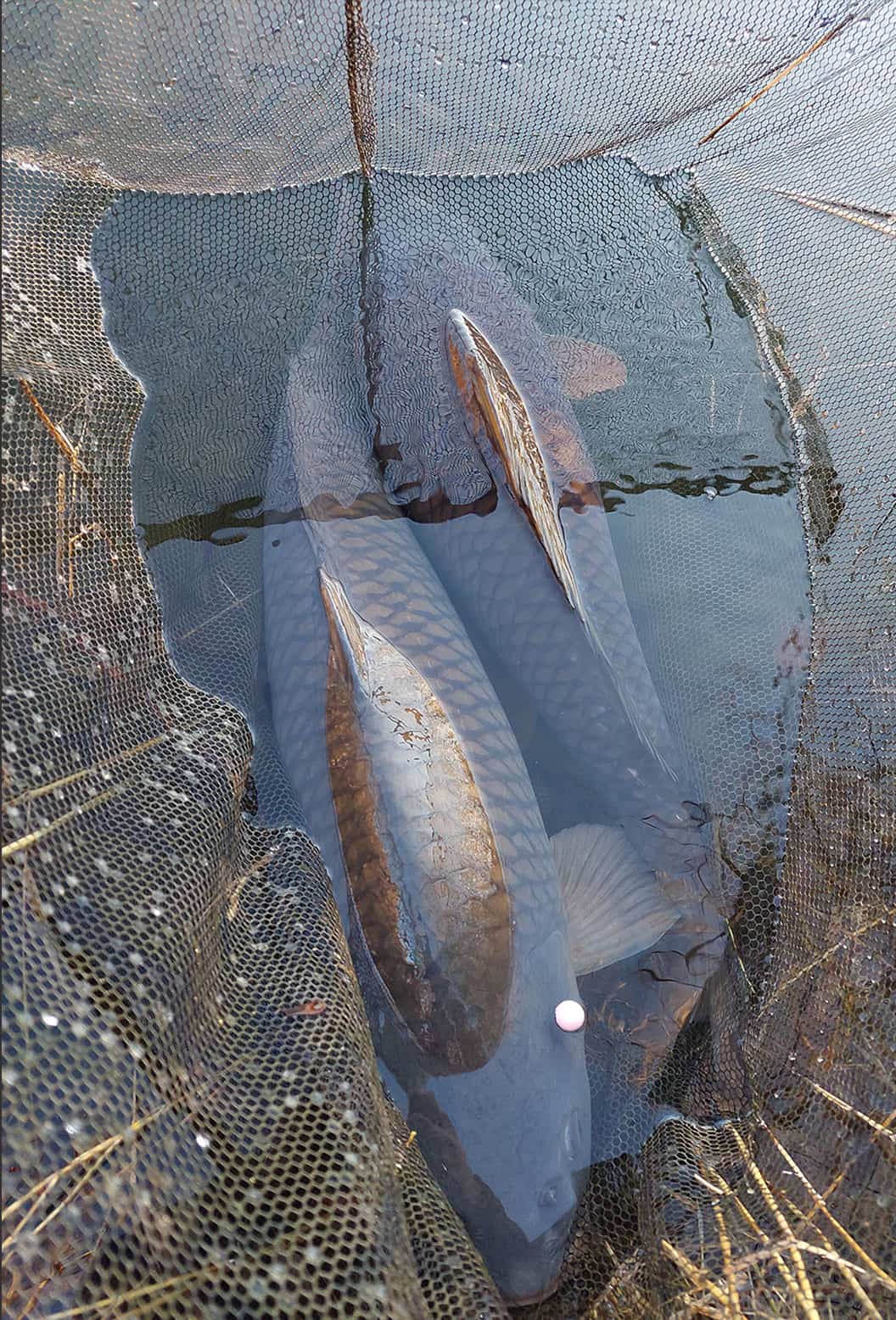
TIP 3
BITE TIMES...
Bite times are also a very interesting subject and crucial for a successful winter session. My personal experience is that bite times during the winter are typically shorter than in the warmer months. The reason for this is very simple; the fish find less food, so they have less energy available to be active and move around.
This often means that they tend to stay in one place and only feed at certain times of the day. Carp generally eat all year round, but in winter they are less mobile and less active in doing so.
Whether the bite times are nocturnal or happen to take place during the hours of daylight can be different from water to water and is also subject to change depending on the weather conditions.
Once you have found out when the bite times are, it is not necessary to fish whole days and nights, or even longer sessions. This is when short sessions at the right time can be very productive.
To start a campaign in winter, I always try to fish full cycles of 24 hours. If this is not possible due to commitments and time constraints, I’ll at least do short sessions during different times of the day and night. By doing that, I try to cover different times of the day to find out when the carp are feeding.
Once this is accomplished, I often shorten my session, especially when it gets very cold, and concentrate my efforts during those specific and occasionally defined bite times.
TIP 3
BITE TIMES...
Bite times are also a very interesting subject and crucial for a successful winter session. My personal experience is that bite times during the winter are typically shorter than in the warmer months. The reason for this is very simple; the fish find less food, so they have less energy available to be active and move around.
This often means that they tend to stay in one place and only feed at certain times of the day. Carp generally eat all year round, but in winter they are less mobile and less active in doing so.
Whether the bite times are nocturnal or happen to take place during the hours of daylight can be different from water to water and is also subject to change depending on the weather conditions.
Once you have found out when the bite times are, it is not necessary to fish whole days and nights, or even longer sessions. This is when short sessions at the right time can be very productive.
To start a campaign in winter, I always try to fish full cycles of 24 hours. If this is not possible due to commitments and time constraints, I’ll at least do short sessions during different times of the day and night. By doing that, I try to cover different times of the day to find out when the carp are feeding.
Once this is accomplished, I often shorten my session, especially when it gets very cold, and concentrate my efforts during those specific and occasionally defined bite times.

TIP 4
WINTER HOOKBAITS...
Once you have found the fish and you know when they are feeding, the next task at hand is to put a bait in front of them that they find attractive. For me winter is clearly the time for brightly colored and strongly flavored pop-ups. While pressured carp might shy away from these baits during the warmer months, in winter they really can come into a league of their own.
To my mind, the reason for this is that in winter, the carps’ metabolism is reduced, and their body functions are much slower than in the warmer months. This means they are less wary, and their guards are down.
I also assume that under such circumstances a bright and high attractive hookbait is just easier for the carp to locate than, for example, a ‘match the hatch’ bottom bait. They just find it easier to smell so the chance that they suck it in out of curiosity or hunger is also that much higher. Visually, the main reason for bright hookbaits effectiveness is that during the winter the carps’ eyesight is reduced because of the effect cold water has on the enzymes in the retinal cells of their eyes.
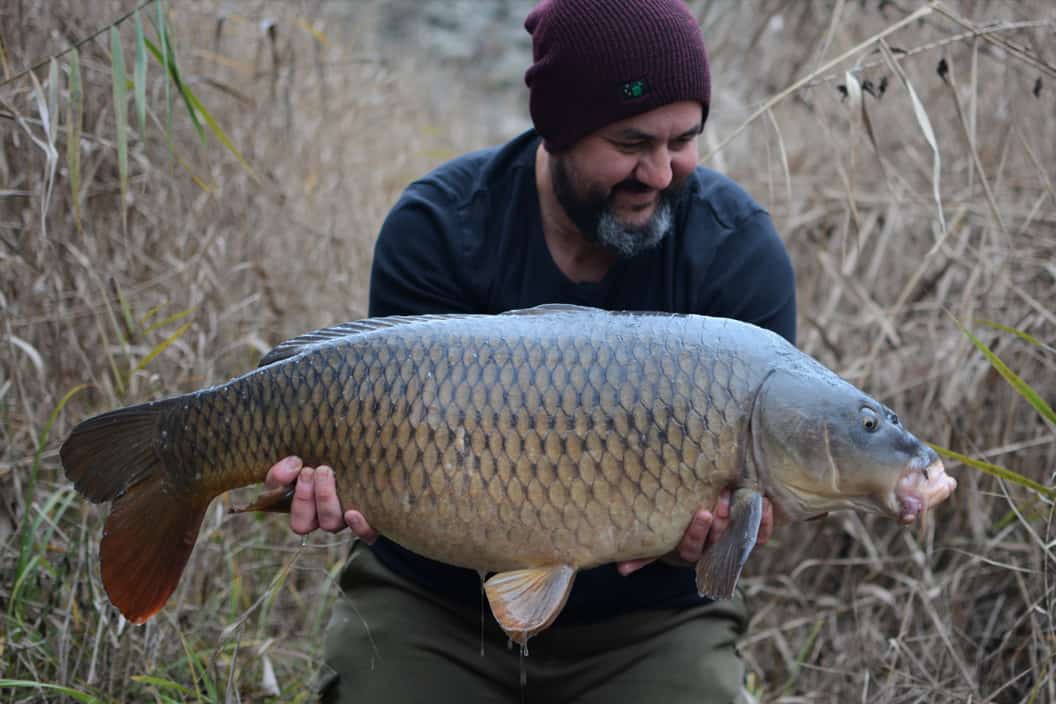
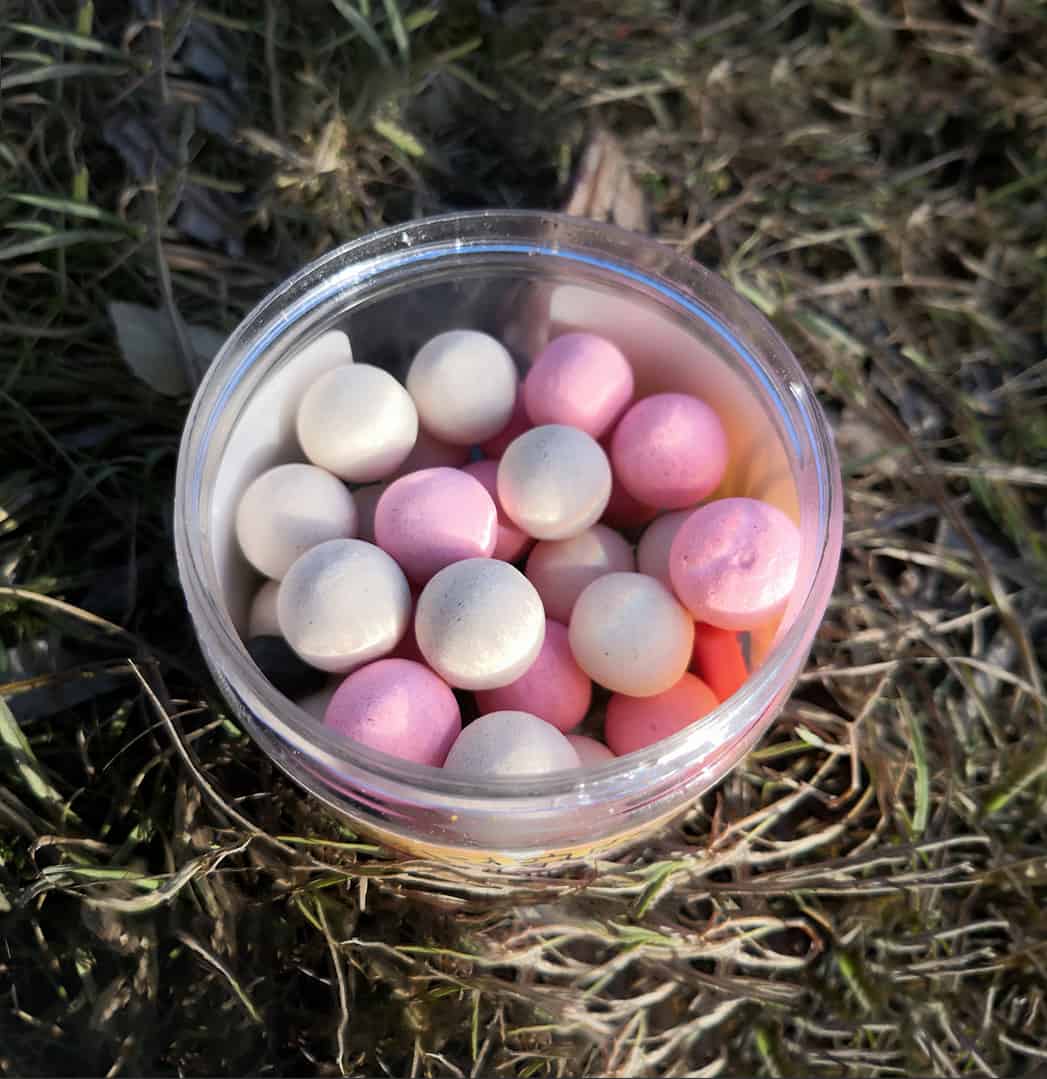
When it comes to hookbait color, pink and white are my favored weapons of choice, and I would not leave home without them when I go on a winter session. Of course, this is also subject to personal preference and I'm sure other anglers will have other favourites when it comes to hookbait colors and flavours.
With regard flavors, my two winter favorites are King Prawn and Plumberry from the Crafty Catcher stable. Both feature flavours that are very soluble in cold water and I have had some great winter success on them over the years.
TIP 4
WINTER HOOKBAITS...
Once you have found the fish and you know when they are feeding, the next task at hand is to put a bait in front of them that they find attractive. For me winter is clearly the time for brightly colored and strongly flavored pop-ups. While pressured carp might shy away from these baits during the warmer months, in winter they really can come into a league of their own.
To my mind, the reason for this is that in winter, the carps’ metabolism is reduced, and their body functions are much slower than in the warmer months. This means they are less wary, and their guards are down.
I also assume that under such circumstances a bright and high attractive hookbait is just easier for the carp to locate than, for example, a ‘match the hatch’ bottom bait. They just find it easier to smell so the chance that they suck it in out of curiosity or hunger is also that much higher. Visually, the main reason for bright hookbaits effectiveness is that during the winter the carps’ eyesight is reduced because of the effect cold water has on the enzymes in the retinal cells of their eyes.

When it comes to hookbait color, pink and white are my favored weapons of choice, and I would not leave home without them when I go on a winter session. Of course, this is also subject to personal preference and I'm sure other anglers will have other favourites when it comes to hookbait colors and flavours.
With regard flavors, my two winter favorites are King Prawn and Plumberry from the Crafty Catcher stable. Both feature flavours that are very soluble in cold water and I have had some great winter success on them over the years.

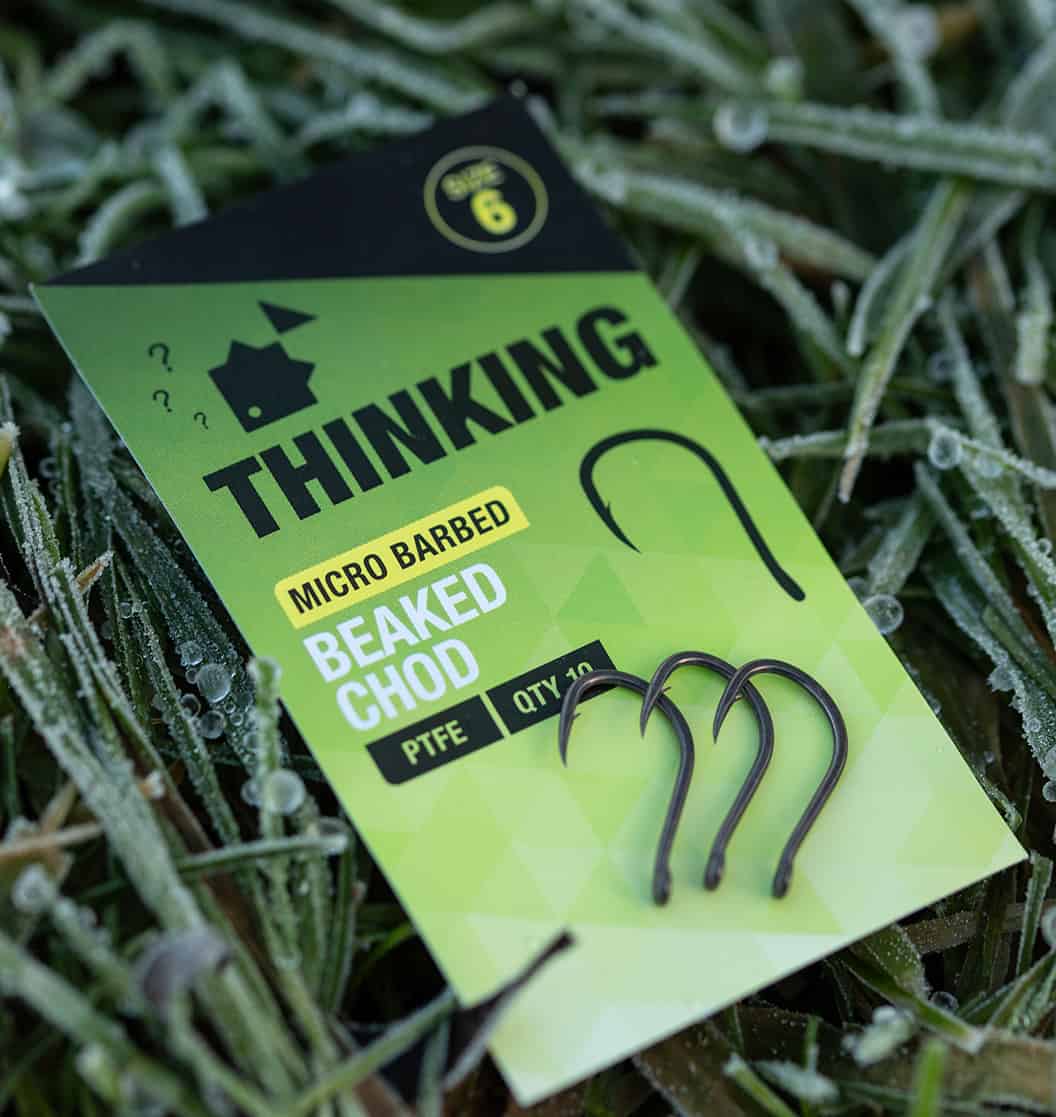
TIP 5
RIGS...
Rig-wise I personally rely on the trusted Hinge Stiff Rig, which is my favorite pop-up presentation all year round. Of course, there are other good pop-up presentations out there and it goes without saying that every angler should use what he or she has utmost confidence in. The only difference, compared to the rest of the year, is that I scale down the size of my hookbaits and similarly drop the size of my hooks too. I still stick with my favorite hook pattern, the new Beaked Chod Hook, dropping down from size 4 to a size 6 hook, and the pop-up hook bait would be 12mm instead of my usual 15mm.
I fine tune the rig differently from the warmer months; in winter I always want my pop-ups to be critically balanced and to sink as slowly as possible. During the warmer months I usually fish my pop-ups overweighted, because I do not want them to waft around when the fish are feeding on the spot. When the fish are feeding heavily a critically balanced bait can be counterproductive and even spook the fish. In winter, however, I think that a critically balanced bait can be an edge, when the fish are less active and feeding with less gusto. In such a scenario a balanced bait can find its way into the carps’ mouth easier compared to an overweighted pop-up.
TIP 5
RIGS...
Rig-wise I personally rely on the trusted Hinge Stiff Rig, which is my favorite pop-up presentation all year round. Of course, there are other good pop-up presentations out there and it goes without saying that every angler should use what he or she has utmost confidence in. The only difference, compared to the rest of the year, is that I scale down the size of my hookbaits and similarly drop the size of my hooks too. I still stick with my favorite hook pattern, the new Beaked Chod Hook, dropping down from size 4 to a size 6 hook, and the pop-up hook bait would be 12mm instead of my usual 15mm.
I fine tune the rig differently from the warmer months; in winter I always want my pop-ups to be critically balanced and to sink as slowly as possible. During the warmer months I usually fish my pop-ups overweighted, because I do not want them to waft around when the fish are feeding on the spot. When the fish are feeding heavily a critically balanced bait can be counterproductive and even spook the fish. In winter, however, I think that a critically balanced bait can be an edge, when the fish are less active and feeding with less gusto. In such a scenario a balanced bait can find its way into the carps’ mouth easier compared to an overweighted pop-up.

TIP 6
BAITING-UP...
My number one rule for baiting up in winter would have to be ‘less is more’!
While I'm trying to find the fish and until I have received the first bite, I am fishing for one bite at a time. In doing so I generally use single hookbaits accompanied by just a little PVA bag filled with micro pellets and boilie crumb. I slide the PVA bag onto the boom section of my Hinge Stiff Rig so that it sits directly on the swivel below the upright section. The idea behind this is that the by doing so the pop-up will ideally sit directly above the content of the PVA bag focusing the source of attraction closely to the hookbait.
It’s only once I have found the fish and after I have had a few bites that I will start putting a little bit more in, but only a little bit more. As a rule of thumb that’s one or two handfuls of bait after each bite.
At the end of my session, I normally put in two more handfuls if I am planning to return the next day. If I had bites, and there are several days between the sessions, then I would maybe put in up to half a kilo.
During the winter I also scale down the size of my free offerings. I like to use PVA bags with micro pellets, boilie crumb or ‘Bait Dust’, which is basically a fine groundbait containing the same attractors and ingredients as the actual boilie itself. Regarding boilies, I will always prefer a 15mm over a 20mm boilie in cold water. This gives you more individual food items and does not fill the fish up so quickly. On top of that it matches the size of my hookbaits much better.
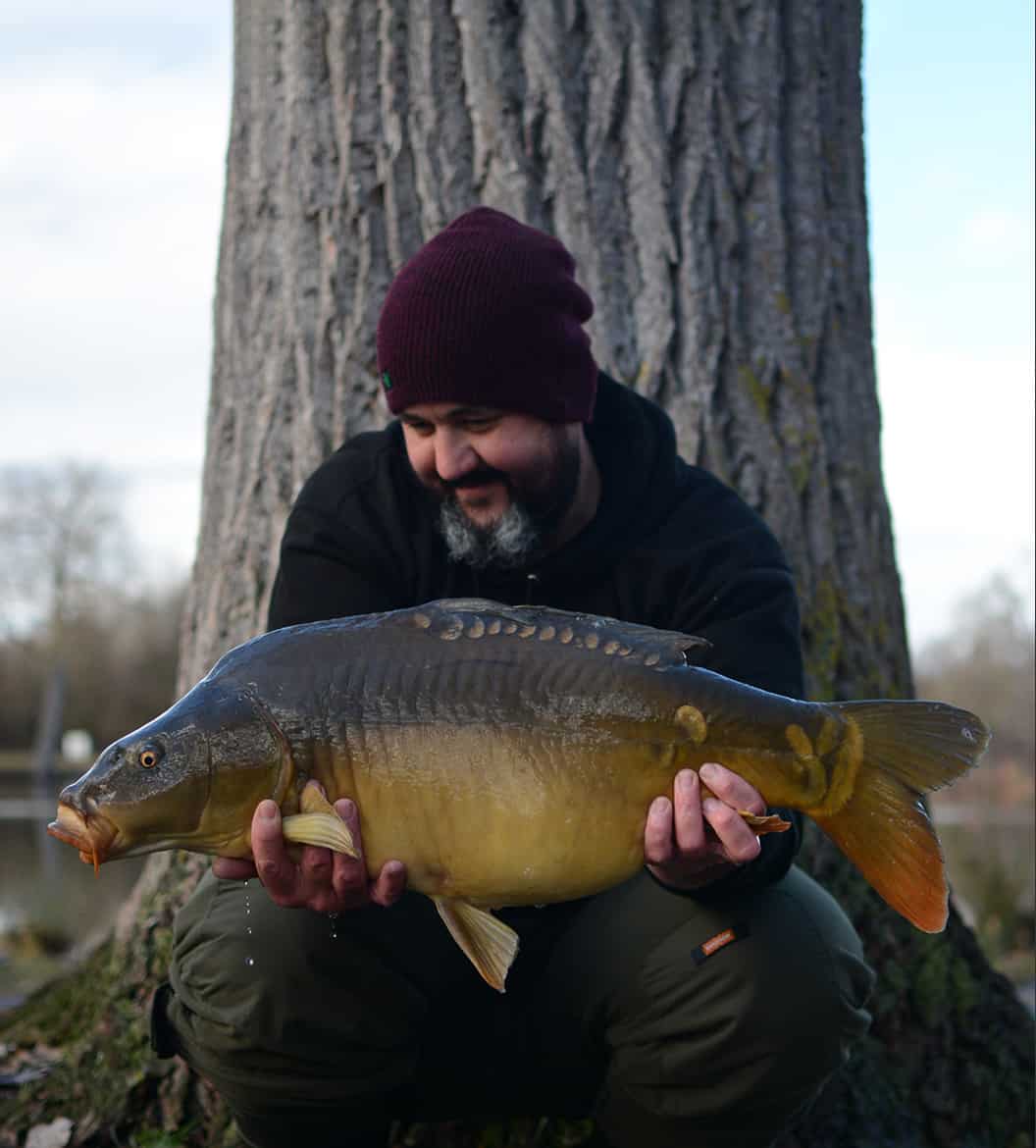
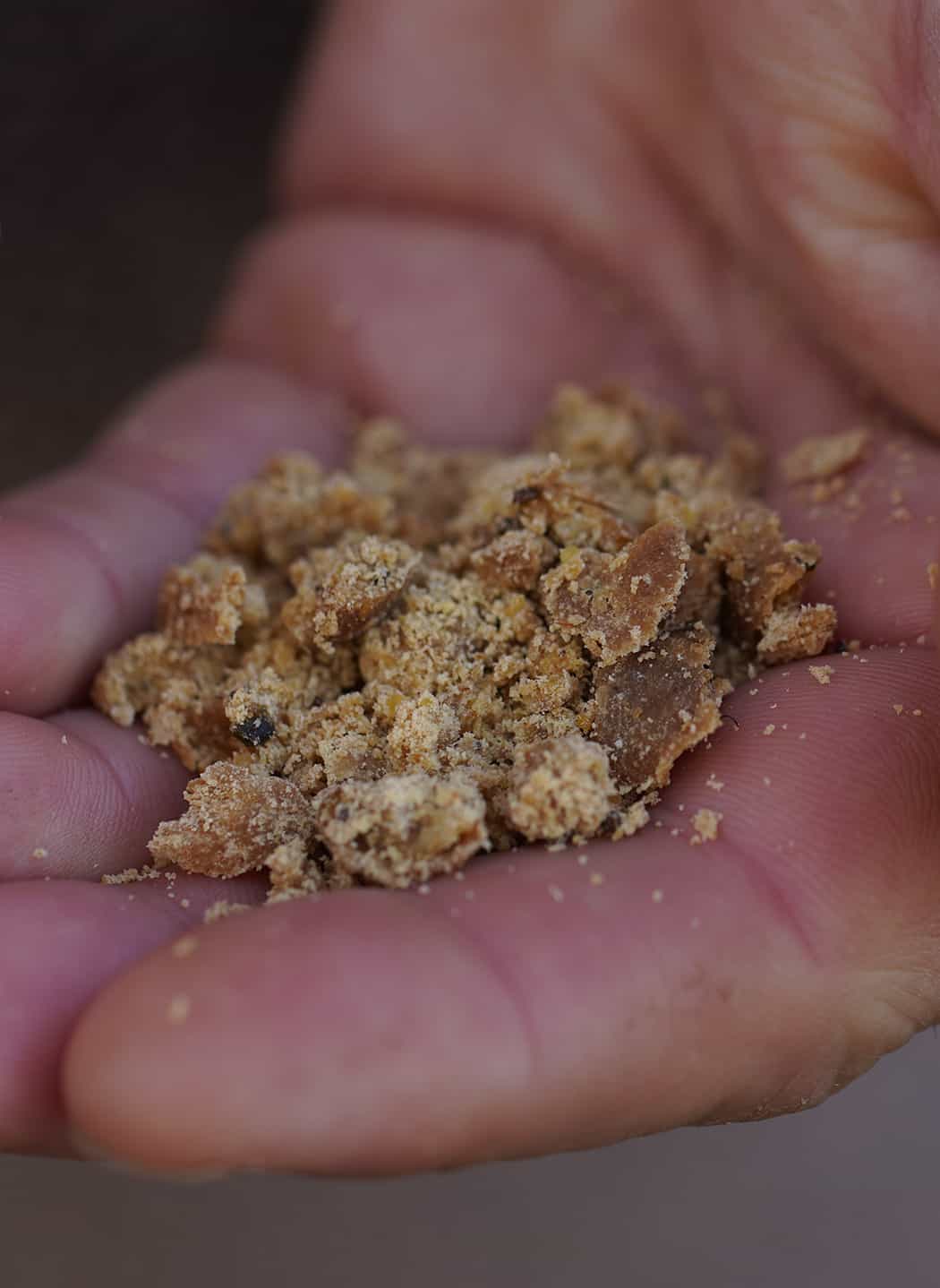
To make my free offerings even more attractive I also like to work with liquid attractors. Especially in cold water when they provide more attraction on the spot, without giving the fish any extra food items risking filling them up. The perfect liquid to use for any of these applications is the “Feeding Cloud”, a beautifully potent and instantly attractive PVA friendly solution that is rich in feeding triggers. Usually, I make a mix of crumbed up boilies, micro pellets and “Bait Dust”, to which I then add enough of the liquids to create a sloppy mix which brings a lot of additional attraction right up through the whole water column. Alternatively, I also have used milk or condensed milk in my mixes in the past, because this also provides for a nice cloud under water and the carp absolutely love it.
So, to sum it up, this is my basic set of ‘rules’ how I tackle carp fishing in winter. Of course, they are not carved in stone, and I refine them along the way adjusting details from year to year whilst working out the most effective strategy for each individual venue.
As I mentioned at the beginning, these rules do not guarantee you a bite, but in my experience, they will improve your chances of catching whilst the water is cold. At the end of the day, it will always be a case of stacking all these little odds in your favor, because all the small edges we have available will add up and hopefully lead to a memorable winter capture.
TIP 6
BAITING-UP...
My number one rule for baiting up in winter would have to be ‘less is more’!
While I'm trying to find the fish and until I have received the first bite, I am fishing for one bite at a time. In doing so I generally use single hookbaits accompanied by just a little PVA bag filled with micro pellets and boilie crumb. I slide the PVA bag onto the boom section of my Hinge Stiff Rig so that it sits directly on the swivel below the upright section. The idea behind this is that the by doing so the pop-up will ideally sit directly above the content of the PVA bag focusing the source of attraction closely to the hookbait.
It’s only once I have found the fish and after I have had a few bites that I will start putting a little bit more in, but only a little bit more. As a rule of thumb that’s one or two handfuls of bait after each bite.
At the end of my session, I normally put in two more handfuls if I am planning to return the next day. If I had bites, and there are several days between the sessions, then I would maybe put in up to half a kilo.
During the winter I also scale down the size of my free offerings. I like to use PVA bags with micro pellets, boilie crumb or ‘Bait Dust’, which is basically a fine groundbait containing the same attractors and ingredients as the actual boilie itself. Regarding boilies, I will always prefer a 15mm over a 20mm boilie in cold water. This gives you more individual food items and does not fill the fish up so quickly. On top of that it matches the size of my hookbaits much better.

To make my free offerings even more attractive I also like to work with liquid attractors. Especially in cold water when they provide more attraction on the spot, without giving the fish any extra food items risking filling them up. The perfect liquid to use for any of these applications is the “Feeding Cloud”, a beautifully potent and instantly attractive PVA friendly solution that is rich in feeding triggers. Usually, I make a mix of crumbed up boilies, micro pellets and “Bait Dust”, to which I then add enough of the liquids to create a sloppy mix which brings a lot of additional attraction right up through the whole water column. Alternatively, I also have used milk or condensed milk in my mixes in the past, because this also provides for a nice cloud under water and the carp absolutely love it.
So, to sum it up, this is my basic set of ‘rules’ how I tackle carp fishing in winter. Of course, they are not carved in stone, and I refine them along the way adjusting details from year to year whilst working out the most effective strategy for each individual venue.
As I mentioned at the beginning, these rules do not guarantee you a bite, but in my experience, they will improve your chances of catching whilst the water is cold. At the end of the day, it will always be a case of stacking all these little odds in your favor, because all the small edges we have available will add up and hopefully lead to a memorable winter capture.

THE RESULTS...


